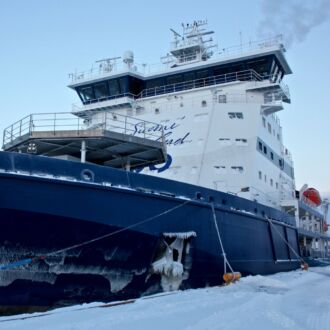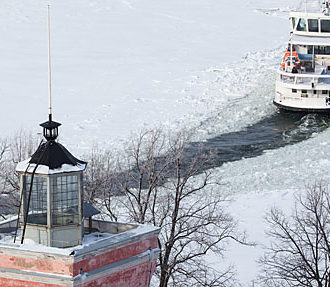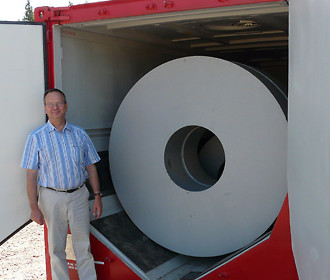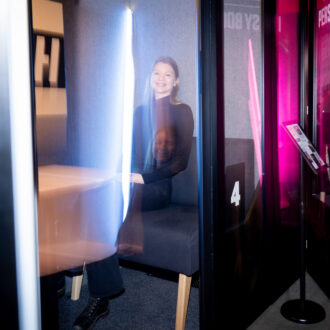Finnish ice technology is held in high regard all over the world. As activities in the Arctic increase and environmental regulations become tighter, the demand for high-quality icebreakers and ice-strengthened cargo ships rises.
Each winter after the Baltic Sea freezes over, Finnish foreign trade depends greatly on efficient winter navigation. Icebreakers are necessary to keep ports and sea lanes open, and only ice-strengthened ships can move on their own in conditions dominated by ice.
This has led Finnish ice technology to develop to a world-leading level over the past 50 years.
Parting the ice

In an ice-testing basin, Aker Arctic conducts ice model tests for its vessels prior to construction. Photo: Aker Arctic
Aker Arctic Technology, a Finnish engineering company specialising in ice technology, has taken a global role in the development of advanced arctic ships and offshore solutions. Its areas of expertise include assessing ice loads, developing hull form and ship structure, designing propulsion systems and providing knowledge about winterisation.
Recent examples of Aker Arctic’s steady flow of innovations include the polar exploration vessel and luxury cruise ship Le Commandant Charcot, an LNG-electric hybrid, for the French company Ponant; a next-generation Baltic assistance icebreaker with unrivalled energy efficiency and the first methanol-ready icebreaker for Sweden; and a year-round service operation vessel (SOV) for offshore wind farms in seasonally freezing seas.
Aker Arctic has also recently completed the hull form and contributed to the concept design for 16 new multipurpose vessels for Canada, and is part of the design team for the upcoming Canadian Polar Icebreaker, which will be one of the most capable icebreakers in the world, operating in the Arctic’s ice-covered waters.
Need for reliable vessels in the Arctic
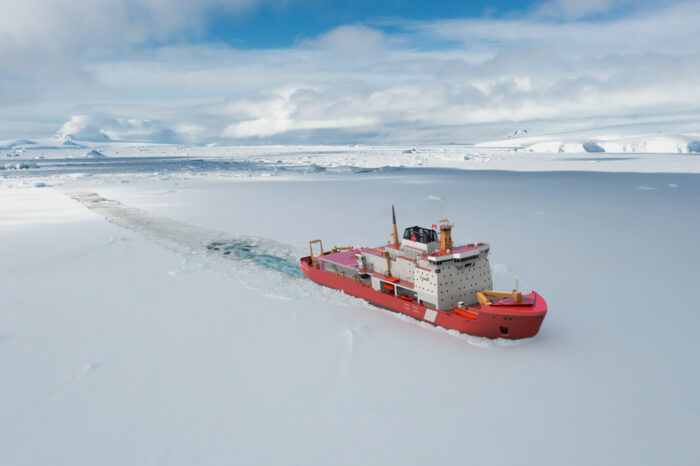
The Finnish company Aker Arctic is part of the design team for the upcoming Canadian Polar Icebreaker.Photo illustration: Aker Arctic
“All activities in the Arctic are very sensitive, due to the fragile environment,” says Aker Arctic managing director Mikko Niini. “Conditions may also be very harsh, with multiyear ice, temperatures down to minus 30 degrees Celsius [minus 22 Fahrenheit] and location far from any infrastructure.
“We have a strong track record in development of polar icebreakers and a high engineering expertise for all kinds of ice-going vessels so our clients trust us to design vessels that need to perform at all times.”
An ice-testing basin contributes to Aker Arctic’s ability to stay at the top of its field. The company conducts ice model tests for its vessels prior to construction. It also maintains the world’s most extensive database on ice performance.
Clients for icebreakers include governments, shipping companies in need of reliable cargo vessels, and the oil and gas industry.
Innovative concepts for sustainable shipping
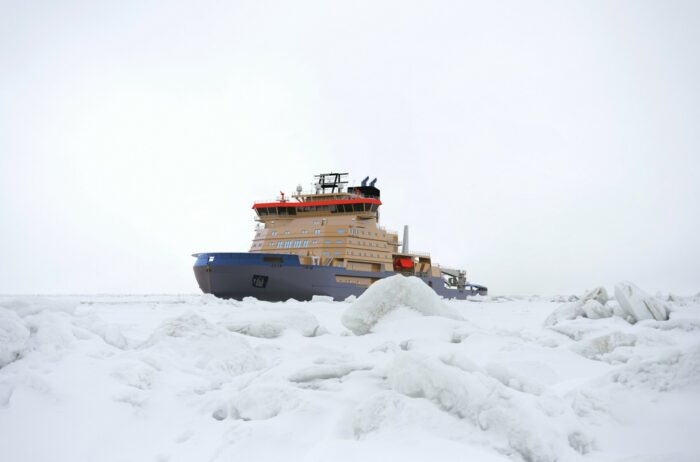
The Baltic assistance icebreaker was designed by Aker Arctic for icebreaking and escorting large commercial vessels into and out of harbours in Sweden.Photo illustration: Aker Arctic
Environmental regulations mean that companies such as Aker Arctic have to adapt their designs to match the applicable rules, and must constantly find new ways to do things more efficiently.
“Our double-acting concept, where a ship moves ahead in open water and astern in ice, had a breakthrough in the Arctic many years ago,” says Niini. “These ships are able to work more independently and cost-efficiently in ice, and they use significantly less fuel compared to conventional ships.
“Other innovative concepts we have developed are the Oblique icebreaker and a Trimaran icebreaker. Both of them can create an ice channel twice the width of a traditional icebreaker although they are much smaller and therefore need less power and less fuel, resulting in fewer emissions. Also, efficient oil-spill response preparedness in areas where there is oil tanker traffic is an essential feature in icebreakers designed by Aker Arctic.”
The company conducts comparisons on the suitability and sustainability of different fuels for use in various icebreaking ships or icebreakers. The comparison is based on the operating area and its environmental conditions, the type of ship, and the ship’s operating profile. Naturally, the availability of alternative fuels in the ship’s operating area influences the choice.
For example, as a result of their research on renewable fuel options for the Baltic assistance icebreaker, methanol was chosen as the most favourable alternative from a technological point of view, providing the longest autonomy time, which is crucial in icebreaking activities.
By Catarina Stewen, December 2013, content updated June 2024
